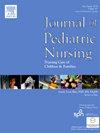Storying the experiences of surviving childhood burns: A narrative inquiry
IF 2.3
4区 医学
Q2 NURSING
Journal of Pediatric Nursing-Nursing Care of Children & Families
Pub Date : 2025-09-13
DOI:10.1016/j.pedn.2025.09.008
引用次数: 0
Abstract
Background
Burns remain a significant global public health which disproportionately affects children. With the increasing survival rates, attention has now shifted to understanding their recovery process. Despite this, the voices of paediatric burn survivors remain minimally explored. The current study aimed to capture and understand the experiences of paediatric burn survivors through their stories or narratives.
Methods
Narrative inquiry methodology was employed. Purposive sampling method was employed to recruit burn survivors aged 8–16 years with a post-burn discharge status of ≥1 month. Semi structured interviews were undertaken to capture the stories of the participants. The three-dimensional approach of temporality, sociality, and spatiality guided the analytical processes to capture narrative threads following which an overarching metanarrative was derived.
Results
Thirteen paediatric burn survivors participated. The meta-narrative was captured as “emergence from the trauma” which conceptualises three narrative threads: 1) navigating the initial trauma (emotional responses, bodily suffering, and reliving the injury occurrence); 2) navigating the ongoing trauma (unexpected hospitalisation and navigating through bodily changes); and 3) working through the aftermath of the trauma (betwixt and between liminal spaces and striving for redefined normalcy).
Conclusion
There is a great need for sustained psychosocial support following admission to the burn unit to enable children to make sense of their injuries, recovery process, and come to terms with the aftermath.
Practice implications
Psychosocial support is greatly need for paediatric burn survivors following admission to the burn unit which must continue to the post-discharge period. Evidence-based approaches regarding burn pain management are also needed.
讲述童年烧伤的幸存经历:一种叙事探究
烧伤仍然是一个重要的全球公共卫生问题,对儿童的影响尤为严重。随着存活率的提高,人们的注意力现在已经转移到了解他们的康复过程上。尽管如此,儿科烧伤幸存者的声音仍然很少被探索。目前的研究旨在通过他们的故事或叙述来捕捉和理解儿科烧伤幸存者的经历。方法采用叙述性调查方法。采用目的抽样方法,招募年龄8-16岁、烧伤后出院≥1个月的烧伤幸存者。采用半结构化访谈来捕捉参与者的故事。时间性、社会性和空间性的三维方法指导了分析过程,以捕捉叙事线索,随后衍生出一个总体的元叙事。结果13例小儿烧伤幸存者参与。元叙事被定义为“从创伤中浮现”,它包含三个叙事线索:1)处理最初的创伤(情感反应、身体痛苦和重温伤害事件);2)应对持续的创伤(意外住院和应对身体变化);3)从创伤的余波中走出来(在阈限空间之间和为重新定义的正常状态而奋斗之间)。结论:入院后需要持续的心理社会支持,以使儿童能够理解他们的伤害,恢复过程,并接受后果。实践意义:在进入烧伤科后,儿童烧伤幸存者非常需要社会心理支持,这种支持必须持续到出院后。也需要基于证据的烧伤疼痛管理方法。
本文章由计算机程序翻译,如有差异,请以英文原文为准。
求助全文
约1分钟内获得全文
求助全文
来源期刊

Journal of Pediatric Nursing-Nursing Care of Children & Families
NURSING-PEDIATRICS
CiteScore
3.70
自引率
8.30%
发文量
291
审稿时长
65 days
期刊介绍:
Official Journal of the Society of Pediatric Nurses and the Pediatric Endocrinology Nursing Society (PENS)
The Journal of Pediatric Nursing: Nursing Care of Children and Families (JPN) is interested in publishing evidence-based practice, quality improvement, theory, and research papers on a variety of topics from US and international authors. JPN is the official journal of the Society of Pediatric Nurses and the Pediatric Endocrinology Nursing Society. Cecily L. Betz, PhD, RN, FAAN is the Founder and Editor in Chief.
Journal content covers the life span from birth to adolescence. Submissions should be pertinent to the nursing care needs of healthy and ill infants, children, and adolescents, addressing their biopsychosocial needs. JPN also features the following regular columns for which authors may submit brief papers: Hot Topics and Technology.
 求助内容:
求助内容: 应助结果提醒方式:
应助结果提醒方式:


